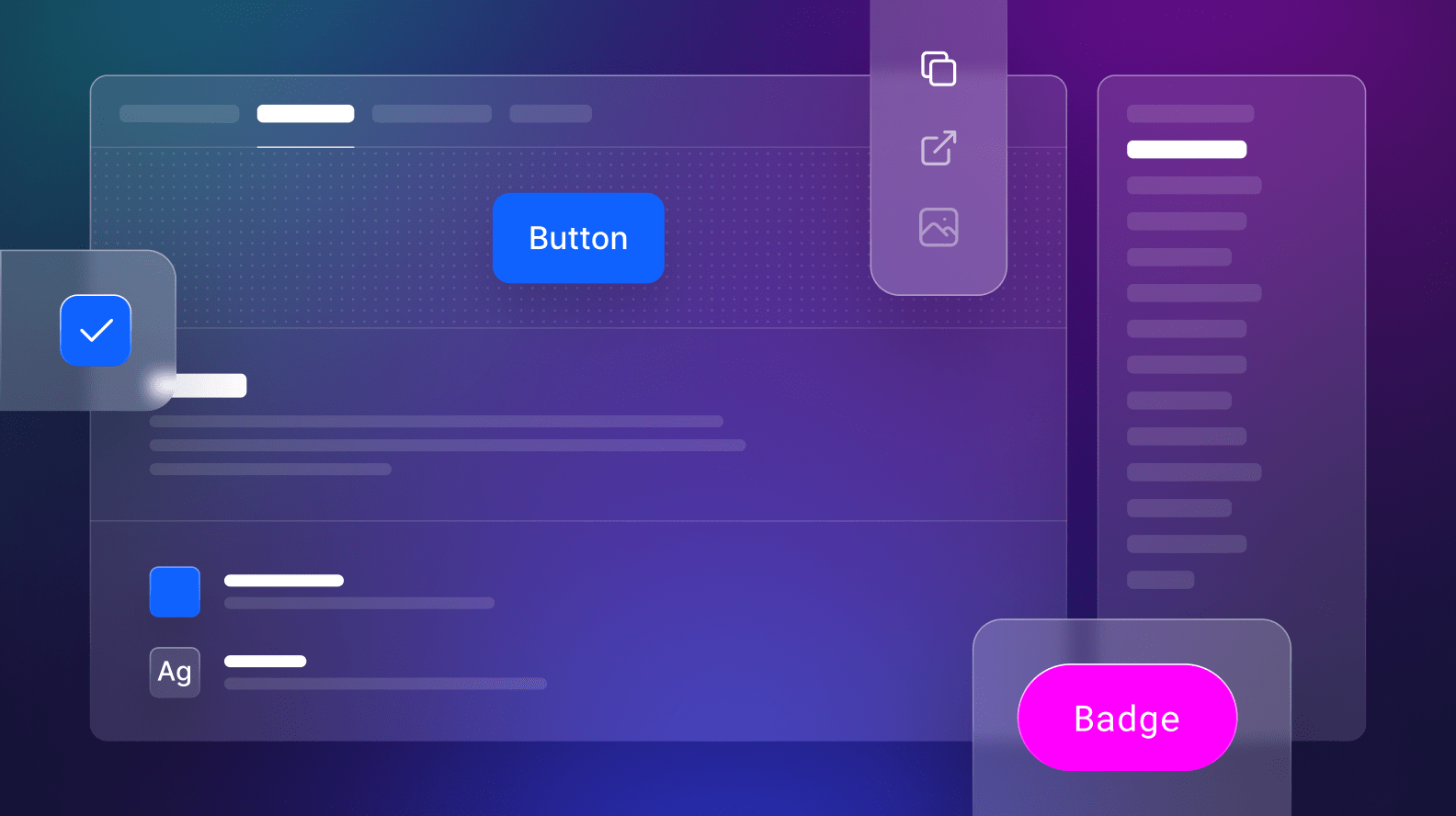The chasm between design and development sometimes can sometimes feel like an uncrossable gulf. But don't worry, intrepid creators! During our recent panel: Optimize Design-to-Developer Handoffs with Design Systems, design systems experts shared their experience and knowledge on bridging this gap and forging a smooth path through the handoff process. Contributing to the panel were:
Read on to find out the six main takeaways from the panel, you can also rewatch it in full. Their insights offer valuable takeaways for designers, developers, and product managers alike, ensuring seamless collaboration and successful product launches.
Adapt your handoff bridge to your organization
"There's no magic bullet, no one-size-fits-all approach," — Adekunle Oduye, Design Engineer at Plaid
The ideal handoff process hinges on your team's unique dynamic, company culture, and project complexity. At Zapier, documentation and ongoing conversations drive the flow, while Plaid leverages a more structured workflow with design reviews and handoff meetings. Remember, flexibility is key.
Build empathy to get more people involved
Designers stressed the importance of developers understanding their creative process.
"Help developers understand the design review process," — Aletheia Delivre, Head of Design Operations at Zapier
"It's not a critique, it's an iterative process to get to the best solution." Similarly, developers valued inclusion in usability testing. "Get developers involved," echoed Valerie. "It helps them understand the 'why' behind design decisions and builds empathy." Effective handoffs go beyond handovers; they involve genuine understanding and open communication.
Utilize design system documentation
Clear, concise documentation acts as the Rosetta Stone, translating design intent into developer-friendly language. "Documentation is the bridge," reiterated Adekunle. Include design specs, code snippets, and user journey maps, ensuring everyone operates on the same page. Version control and easy access are crucial, as Valerie reminded us: "Ensure everyone's working with the latest specs and code snippets." Consider design system platforms like Supernova to streamline this process and foster collaboration.
Align early and constantly
Shared goals and user needs act as the invisible glue holding the handoff together. "Align on user needs and project goals early on," advised Aletheia. "This sets the stage for a smooth handoff." Workshops, hackathons, and shared project ownership can facilitate this alignment. Additionally, understanding each other's pain points fosters respect and collaboration.
"Understanding each other's pain points and priorities fosters collaboration and mutual respect." — Valerie Phoenix, Engineering Manager at Alma
A successful handoff isn't just about delivering assets; it's about aligning hearts and minds towards a shared vision.
Champion design engineers to bridge the gap
Design engineers act as translators, bridging the gap between design dreams and technical realities. "Design engineers are the translators," explained Aletheia. They not only translate intent into feasible solutions but also champion design systems, ensuring consistency and reusability across projects. While not every company may have a dedicated design engineer, Adekunle encourages a hybrid mindset: "Team members can still adopt a hybrid mindset to bridge the communication gap." Fostering cross-functional understanding is key to a seamless handoff experience.
Build a collaborative culture beyond handoff
Beyond specific tactics, the panelists emphasized the importance of fostering a collaborative culture. "It's not just about handoffs, it's about building a shared understanding and a collaborative workflow," our very own Jocelyn Hsu summarized. Leverage design system tools and libraries to automate tasks and ensure consistency. Conduct regular retrospectives to identify areas for improvement in the handoff process. Ultimately, open communication, empathy, and a shared vision are the pillars of a successful design-to-developer handoff.
Remember, the journey across the design-developer bridge is an ongoing exploration. Embrace flexibility, build genuine connections, and continuously refine your process. By implementing these insights and fostering a collaborative spirit, you can transform handoffs from a hurdle into a springboard for innovation and success. Also check out how Supernova can you ease the burden of handoff with automated delivery between design and code.




.png)